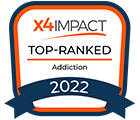Many conversations between Ozempic patients and their doctors center on the side effects of Ozempic, particularly nausea and vomiting. Scientists discovered that GLP-1 agonists can cause GI upset long before Ozempic became popular, so there are a few options for finding relief from these side effects. Here are steps you can take to relieve nausea caused by taking Ozempic.
What causes the nausea following an Ozempic injection?
There are a couple of theories as to why GLP-1 agonists like Ozempic cause nausea. Slowing down the movement of food through the stomach and intestines may be one reason.
Another cause could be the effect Ozempic has on GLP-1 receptors in your brain.
How can I relieve nausea or heartburn caused by Ozempic?
You should always keep your provider up to date on how you’re responding to your Ozempic injections. They’ll be able to offer the best advice on how to alleviate your discomfort. Here are a few ideas that have worked for other Ozempic patients:
Diet changes
There are a few ways to change eating habits that have helped some people curb feelings of nausea or heartburn:
- Avoid spicy, fatty, and greasy foods
- Eat light, bland foods such as crackers, toast, or rice
- Eat foods that contain a lot of water, such as soup or Jell-O
- Eat slowly
- Drink cool, clear beverages like water and unsweetened iced tea
- Avoid eating within 2 hours of lying down or going to bed
Dose change
Another way to decrease the side effects of Ozempic is to lower the dose you are taking. Some patients don’t have side effects when first beginning Ozempic but start having nausea as their dose is increased. In these cases, you can talk to your provider about lowering your dose to the previous dose. Most people will still lose weight, even on the lower dose.
Nausea and heartburn medications and supplements
Zofran (ondansetron) is a prescription drug that can help with nausea. Talk with your provider to see if Zofran is a good option for you. Generic Zofran costs around $12 for 20 tabs that dissolve in your mouth. Visit the GoodRX Generic Zofran page to see prices near you.
Prilosec (omeprazole), Nexium (esomeprazole), and other proton pump inhibitor (PPI) medications come in over-the-counter and prescription strengths to relieve and prevent heartburn.
Ginger has been used over the centuries to relieve nausea caused by pregnancy, motion sickness, and other conditions—and there are scientific studies to back this up. And now, many swear by its ability to ward off nausea brought on by Ozempic. Ginger comes in many forms—capsules, tablets, tea, powders, gummies, and cookies—but most research studies look at oral dietary supplements, not foods. Considering it is safe and relatively inexpensive, ginger could be a good place to start when trying out nausea remedies.
Calcium carbonate like Tums will help relieve symptoms of heartburn. Antacid medicines like famotidine (Pepcid) are also effective in relieving heartburn.
Always speak to your provider regarding your options for heartburn and nausea relief.















